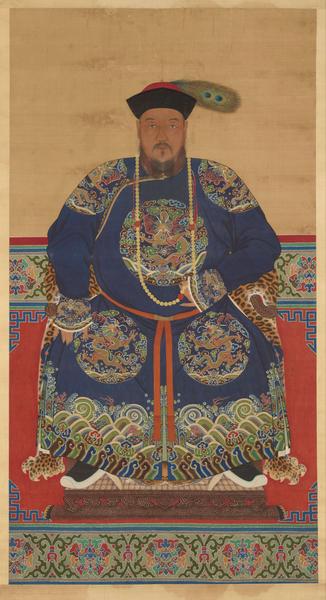
Cuyen
| Name | Cuyen |
| Title | Manchu prince (1580-1615) |
| Gender | Male |
| Birthday | 1580-01-01 |
| nationality | Ming dynasty |
| Source | https://www.wikidata.org/wiki/Q836176 |
| pptrace | View Family Tree |
| LastUpdate | 2025-10-27T03:41:18.572Z |
Introduction
Cuyen (Manchu: ᠴᡠᠶᡝᠨ, Möllendorff: cuyen, Abkai: quyen) was a Manchu prince born in 1580 and died on 14 October 1615. He was the eldest son of Nurhaci, the founder of the Later Jin regime, which later became the Qing dynasty. Cuyen’s birthplace is situated in the present-day Jilin province in northeastern China. He belonged to a prominent family of Jianzhou Jurchens; his grandfather was Taksi, and his mother was Hahana Jacing of the Tunggiya clan, Nurhaci's primary wife. He was also the father of Prince Dudu of the Third Rank and Prince Nikan.
Cuyen was recognized for his abilities as a warrior. His early military career included participation in his first major battle in 1598 at the age of 18, against the Anculakit, a rival Jurchen tribe. Following his victory, Nurhaci awarded him the title of Hung Baturu. In Chinese sources, he was sometimes called Hong Batu, meaning "red guy grasping a rabbit." Around 1608, he led military campaigns alongside his brother Daišan, notably storming the town of Fio Hoton, which was linked to efforts to resettle oppressed Jurchen tribes. During this period, Cuyen came into conflict with his uncle Šurhaci, who had marital ties to the Ula clan, a rival faction.
Nurhaci initially designated Cuyen as his heir apparent and entrusted him with significant political authority within the regime. During Nurhaci's campaigns, Cuyen often assumed civil administrative roles, especially when Nurhaci was absent. His leadership role, however, generated jealousy among his brothers and male cousins; grievances included unequal distribution of spoils and perceived greed in land grants. Nurhaci responded by reprimanding Cuyen and advised him to be more generous to his family members.
In 1612, Nurhaci left for a military campaign against the Ula clan, during which Cuyen was appointed as de facto chief administrator in the capital, assisted by his brother Daišan. However, Cuyen’s influence waned as Nurhaci shifted governance towards consensus among his princes. That same year, Cuyen reportedly attempted to use sorcery to curse other princes, an act considered to have contributed to his downfall. Nurhaci, incensed by Cuyen's conduct and continued hostilities against other princes, ordered Cuyen to be placed in solitary confinement. He died in captivity two years later, in 1615. Official records state Nurhaci executed him, but the actual circumstances are unclear. A Ming dynasty account suggests Cuyen may have opposed incursions into Ming territory, which could have led to Nurhaci’s hostility, but this is not confirmed.
Cuyen was the first commander of the Plain White Banner. He was granted the title of beile (a noble rank) prior to 1598 and was posthumously honored with the title Crown Prince Guanglue. His titles were later changed to Beile Guanglue and eventually standardized as a "third-grade prince" in subsequent generations. His descendants were part of the Aisin Gioro clan, with some holding minor official positions.
His family included his first wife from the Gorolo clan and his second wife from the Yehe Nara clan. His children included his sons Dudu and Nikan, and daughters who married prominent figures such as Fiongdon of the Gūwalgiya clan.
Cuyen's ancestry traces back to the Jurchen clans, with connections to notable figures in the early Manchu confederation.
Family Tree
Tap to expand more relatives